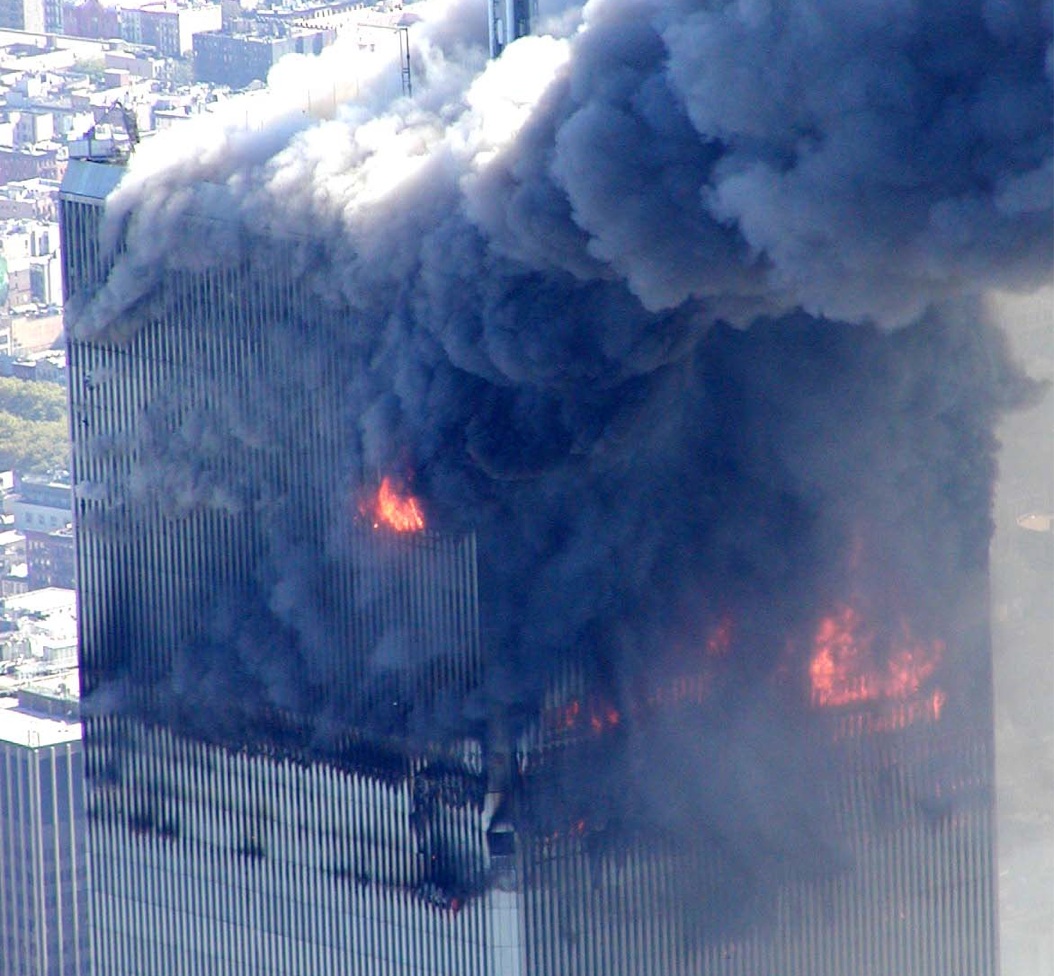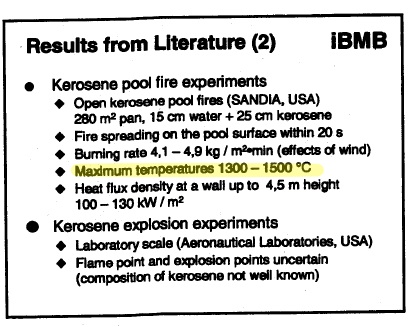9/11 truthers often suggest that the WTC fires died down after a few minutes when the jet fuel burned away. This time-lapse video shows otherwise.
It starts a few minutes after the first plane hit, and includes the second plane impact and both collapses. It basically one take from the same position. There is some camera movement and re-framing which I've tried to eliminate so it mostly shows the same area. It's sped up 80x to make the spread more apparent.
Of particular note is that you can visibly see the fire spreading in both towers in the minutes before the collapses. Far from dying down, it's actually spreading and getting bigger.
And here's a sequence of photos of the fires at 10:22AM, just six minutes before the collapse of WTC1.

With a couple of close-ups. Remember the towers are 200 feet across a side, so these fires are huge.

(Greg Semendinger image 27. Camera EXIF time 10:21 is about a minute slow)
That does not even show the full extent of the fires, a few seconds earlier a more direct angle on the side to the left shows several entire floors with active fires.

Timeline: (adapted from: https://en.wikipedia.org/wiki/Timeline_for_the_day_of_the_September_11_attacks )
8:46:40: Flight 11 crashes into the north face of the North Tower (1 WTC) of the World Trade Center, between floors 93 and 99.
9:03:00: Flight 175 crashes into the south face of the South Tower (2 WTC) of the World Trade Center, between floors 77 and 85.
9:59:00: The South Tower of the World Trade Center collapses, 56 minutes after the impact of Flight 175.
10:28:22: The North Tower of the World Trade Center collapses, 1 hour, 42 minutes after the impact of Flight 11.
It starts a few minutes after the first plane hit, and includes the second plane impact and both collapses. It basically one take from the same position. There is some camera movement and re-framing which I've tried to eliminate so it mostly shows the same area. It's sped up 80x to make the spread more apparent.
Of particular note is that you can visibly see the fire spreading in both towers in the minutes before the collapses. Far from dying down, it's actually spreading and getting bigger.
And here's a sequence of photos of the fires at 10:22AM, just six minutes before the collapse of WTC1.
With a couple of close-ups. Remember the towers are 200 feet across a side, so these fires are huge.

(Greg Semendinger image 27. Camera EXIF time 10:21 is about a minute slow)
That does not even show the full extent of the fires, a few seconds earlier a more direct angle on the side to the left shows several entire floors with active fires.
Timeline: (adapted from: https://en.wikipedia.org/wiki/Timeline_for_the_day_of_the_September_11_attacks )
8:46:40: Flight 11 crashes into the north face of the North Tower (1 WTC) of the World Trade Center, between floors 93 and 99.
9:03:00: Flight 175 crashes into the south face of the South Tower (2 WTC) of the World Trade Center, between floors 77 and 85.
9:59:00: The South Tower of the World Trade Center collapses, 56 minutes after the impact of Flight 175.
10:28:22: The North Tower of the World Trade Center collapses, 1 hour, 42 minutes after the impact of Flight 11.
Last edited:



 TT
TT 
